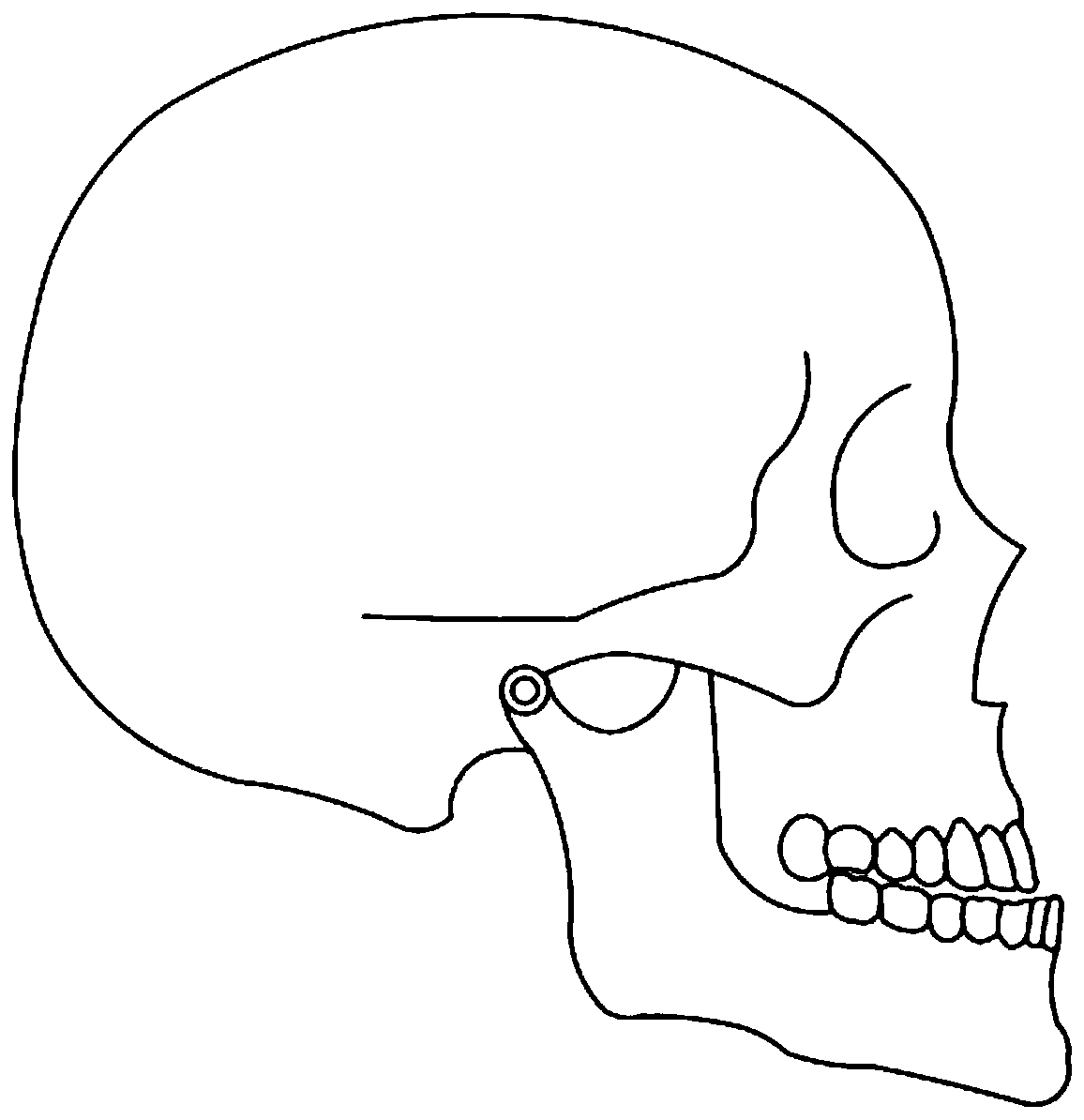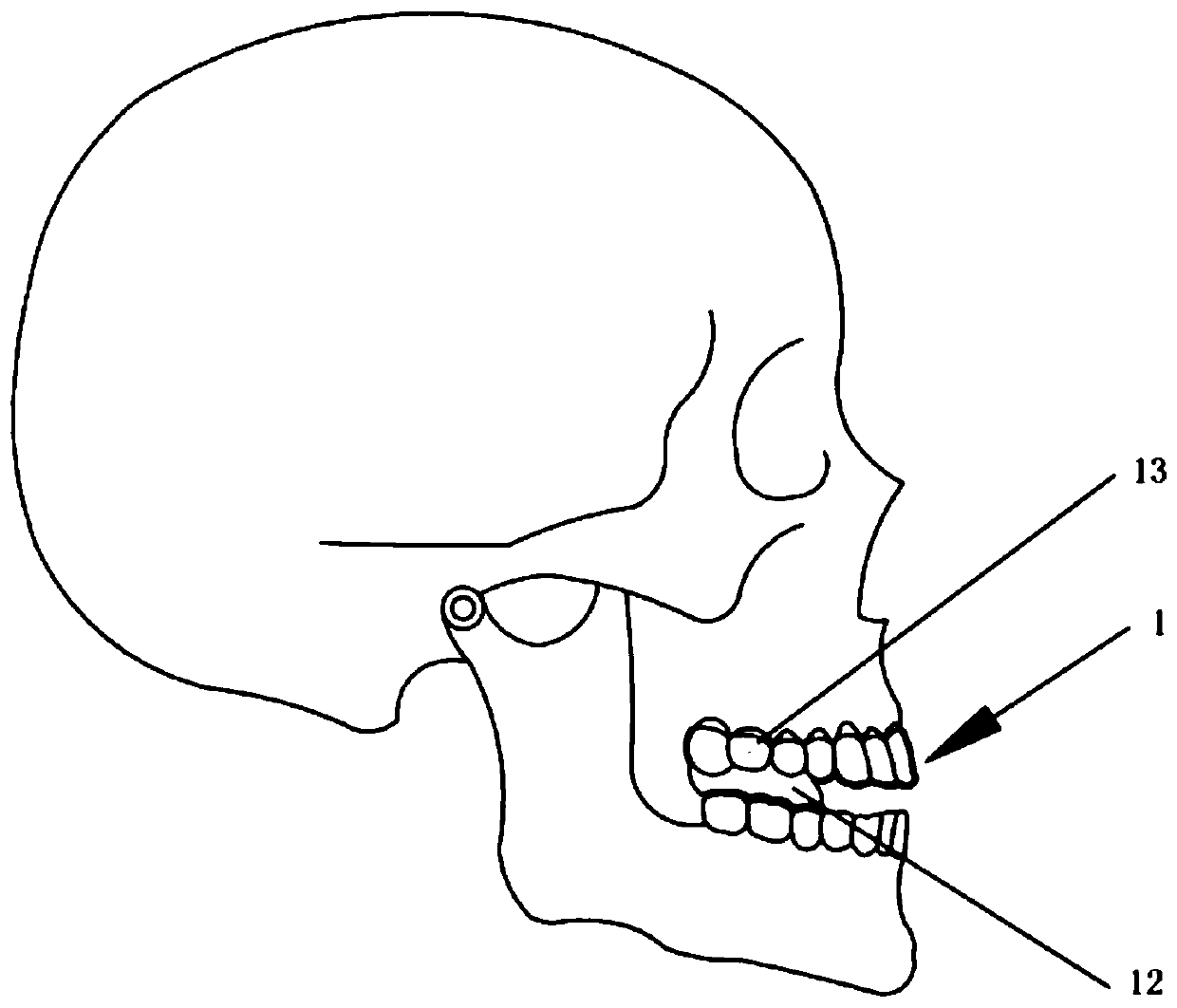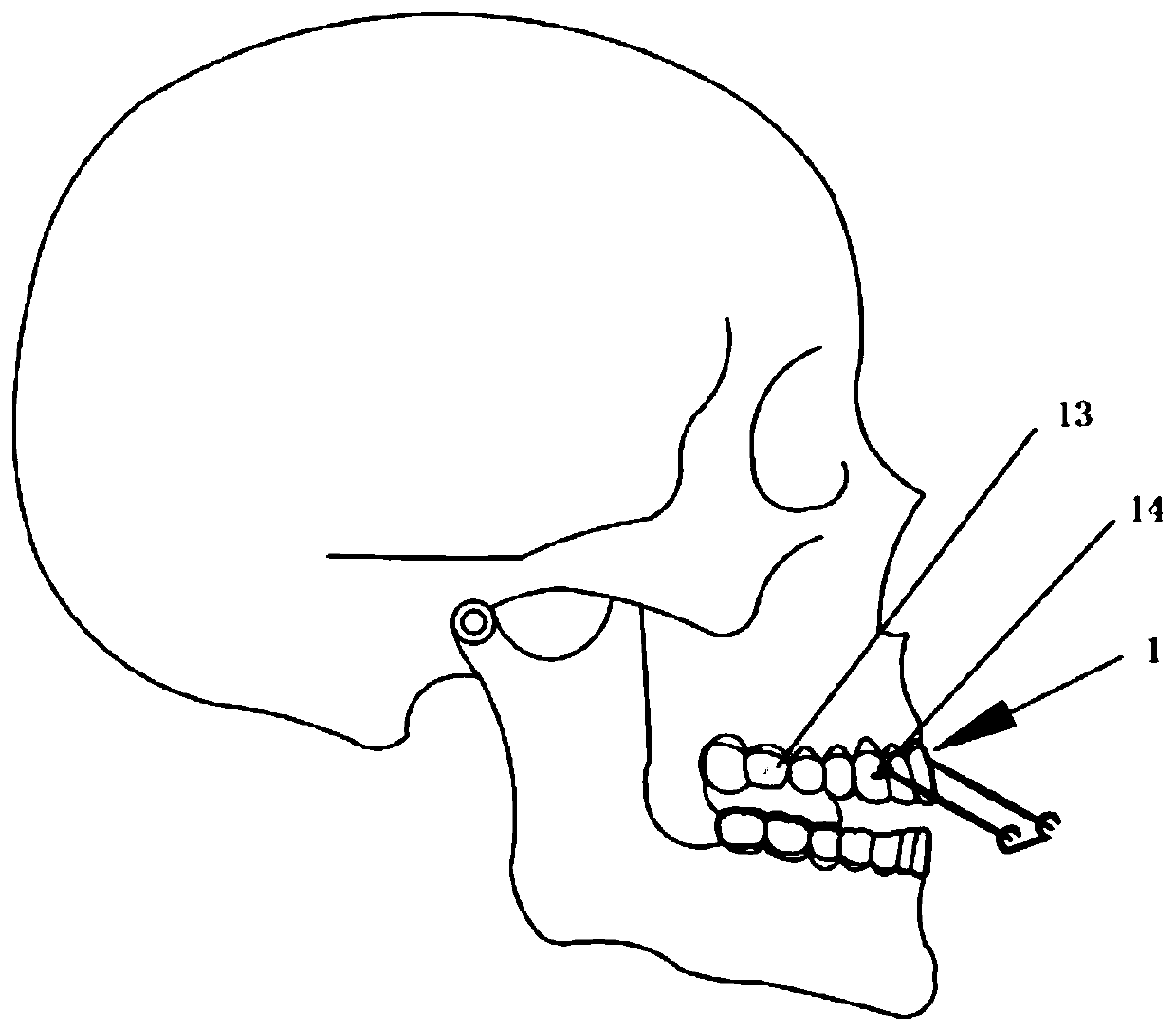Dental-facial deformity orthopedics system and design method thereof
A design method, concave technology, used in medical science, prosthodontics, orthodontics, etc.
- Summary
- Abstract
- Description
- Claims
- Application Information
AI Technical Summary
Problems solved by technology
Method used
Image
Examples
Embodiment 1
[0059] This embodiment provides a treatment system for concave jaw deformity. The concave jaw deformity is mainly caused by inertial drafting of the mandible. The upper jaw is mildly to moderately underdeveloped, and the lower jaw preferably has a flat rectangular shape. The clinical orthodontic feature of concave jaw deformity is that the mandible can be forced back to the incisor of the upper and lower anterior teeth, and the posterior teeth are open because of the deep spee curve of the mandible. see figure 1 , which is an example image of the initial jaw. The core of this embodiment is to force the protruding mandible back to the upper and lower anterior incisors, on this basis, apply the maxillary reverse traction, and finally achieve the goal of mandibular remodeling and occlusal reconstruction, and realize the synchronous orthopedic treatment. Further realize the efficient invisible treatment of concave deformity.
[0060] see Figure 2-Figure 4 , The correction syst...
Embodiment 2
[0073] This embodiment provides a correction system for concave jaw deformity, similar to Embodiment 1, the difference is that the correction system for concave jaw deformity provided by this embodiment also includes a mandibular shell-shaped dental instrument 2, a mandibular shell-shaped The dental instrument 2 includes a cavity shell-shaped body for accommodating a number of mandibular teeth. At the same time of jaw orthopedic reshaping, the shape of the anterior tooth area of the mandibular shell-shaped dental instrument gradually changes so that the corresponding teeth are gradually depressed from the initial position to the orthodontic target position . In this embodiment, the upper and lower jaws wear the shell-shaped dental instrument at the same time to realize the simultaneous correction of the upper and lower jaws. Specifically, when the upper jaw undergoes simultaneous jaw correction and tooth correction, the lower jaw shell-shaped dental instrument also performs t...
Embodiment 3
[0079] see Figure 6 , this embodiment provides a principle diagram of Embodiment 3 of a correction system for concave jaw deformity. Similar to Embodiment 2, the difference is that the orthodontic system for concave jaw deformity also includes the first intermaxillary traction member 31 set on the maxillary shell-shaped dental instrument and the second intermaxillary traction set on the mandibular shell-shaped dental instrument Part 32, after jaw orthopedic remodeling, the first intermaxillary traction part 31 and the second intermaxillary traction part are connected by elastic part 33, so that the upper and lower jaw teeth can adjust the occlusal relationship. Specifically, after the bone orthopedic remodeling in Example 1, with the fine adjustment of the occlusion as the main goal, the intermaxillary traction device can be used to perform Class III intermaxillary traction, and the attachments of the upper and lower dentition can be replaced according to the orthodontic need...
PUM
 Login to View More
Login to View More Abstract
Description
Claims
Application Information
 Login to View More
Login to View More - R&D
- Intellectual Property
- Life Sciences
- Materials
- Tech Scout
- Unparalleled Data Quality
- Higher Quality Content
- 60% Fewer Hallucinations
Browse by: Latest US Patents, China's latest patents, Technical Efficacy Thesaurus, Application Domain, Technology Topic, Popular Technical Reports.
© 2025 PatSnap. All rights reserved.Legal|Privacy policy|Modern Slavery Act Transparency Statement|Sitemap|About US| Contact US: help@patsnap.com



